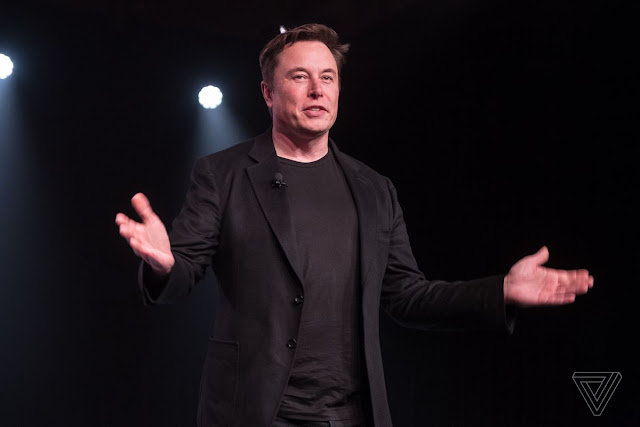Understanding Influencer Marketing
Influencer marketing has become a crucial component of e-commerce marketing. It connects brands with influential figures to promote products and services effectively. This contemporary approach helps businesses increase brand visibility, traffic, and conversions.
Evolution of Influencer Marketing
The roots of influencer marketing trace back to traditional celebrity endorsements. However, with the rise of social media, the landscape has significantly transformed. Today, it encompasses a wide array of influencers, ranging from mega-influencers to nano-influencers. This evolution allows brands to tap into diverse audience segments and leverage different engagement levels.
| Type of Influencer | Follower Count | Characteristics |
|---|---|---|
| Nano-influencers | Fewer than 10,000 | High engagement rates, effective for targeted marketing (Influencity Blog) |
| Micro-influencers | 10,000 – 100,000 | Broad reach, high engagement, ideal for specific demographics (Influencity Blog) |
| Macro-influencers | 100,000 – 1 million | Wide audience reach, enhances brand visibility (Influencity Blog) |
| Mega-influencers | 1 million+ | Extensive reach; often celebrities, high brand awareness potential |
The democratization of content creation via social media platforms has opened doors for influencers of all shapes and sizes. Brands recognize the value each type of influencer brings to specific marketing efforts, allowing for highly targeted campaigns that resonate with distinct audiences.
Types of Influencers
Understanding the types of influencers is essential for e-commerce business owners and CMOs to strategically choose partners that align with their marketing objectives.
Nano-influencers are social media users with follower counts of under 10,000. They have elevated engagement rates and are particularly effective for niche marketing, making them ideal for brands that wish to promote products in specialized markets (Influencity Blog).
Micro-influencers typically have a following between 10,000 and 100,000. They not only maintain high engagement levels but also offer a wider reach, making them appealing for brands seeking to target specific demographics (Influencity Blog).
Macro-influencers are influencers with follower counts ranging from 100,000 to 1 million. They provide broad exposure, making them suitable for brands aiming to enhance visibility and reach a larger audience (Influencity Blog).
Mega-influencers often have over a million followers and include celebrities. While they can command significant attention to products or services, the investment required is typically higher, and engagement rates may vary.
Brands must assess their goals and target demographics when selecting influencers. Given the variety of influencer types, understanding their unique characteristics allows businesses to make informed decisions in their e-commerce marketing strategies.
Importance of Influencer Marketing in E-commerce
Influencer marketing has become a vital strategy for e-commerce businesses. By leveraging the reach and credibility of influencers, brands can enhance their visibility, build trust, and ultimately drive sales. This section discusses the role of influencer marketing in increasing traffic and its impact on conversions.
Role in Increasing Traffic
The primary benefit of e-commerce influencer marketing is its ability to boost traffic to online stores. When influencers share a brand’s products with their followers, they create direct pathways for potential customers to visit the e-commerce site. Research indicates that influencer endorsements lead to substantial increases in website visits Bingage.
In fact, brands can amplify their reach by utilizing paid promotions alongside influencer posts, which help in reaching new and relevant audiences (Acowebs).
| Metric | Impact |
|---|---|
| % Increase in Traffic | 20-30% |
| Average Click-Through Rate | 2-5% |
| Influencer Reach (in millions) | Varies |
Impact on Conversions
Influencer marketing not only drives traffic but also significantly affects conversion rates. Statistics show that 31% of consumers make purchases based on influencer recommendations Acowebs. This strong link between influencer endorsement and consumer behavior demonstrates the power of trust and authenticity conveyed by influencers.
Conversions can be further optimized by tailoring campaigns to match the audience preferences and using exclusive discount codes provided through influencers. This strategy encourages followers to make purchases while tracking the performance of each campaign. Integrating these methods into a broader approach including e-commerce conversion rate optimization ensures the effective utilization of influencer marketing.
| Conversion Metric | Value |
|---|---|
| Average Conversion Rate | 1-5% |
| Purchase Attribution from Influencers | 31% |
| ROI from Influencer Campaigns | 3-10x |
By understanding these aspects, e-commerce business owners and marketers can better leverage influencer marketing to increase both traffic and conversions, ultimately enhancing their overall marketing strategy. For more comprehensive marketing tactics, explore our insights on e-commerce marketing strategies and e-commerce marketing tools.
Maximizing ROI in Influencer Marketing
E-commerce influencer marketing can significantly boost an online retailer’s success when approached correctly. To ensure a successful campaign, businesses must focus on measuring ROI and employing optimization strategies effectively.
Measuring Influencer Marketing ROI
Measuring the ROI of influencer marketing involves quantifying the financial gains from influencer campaigns compared to the investments made. This evaluation is crucial in optimizing budget allocation, guiding future marketing decisions, and highlighting successful strategies. Brands typically analyze several metrics to assess their ROI:Famesters
| Metric | Description |
|---|---|
| Reach | Total number of people who saw the influencer’s content |
| Engagement | Interactions such as likes, shares, and comments |
| New Followers | Increase in followers on social media platforms |
| Leads | Number of potential customers generated |
| Purchases | Total sales resulting from the campaign |
| Revenue | Overall income generated from the influencer’s promotion |
To accurately track these metrics, brands can use tools like coupon codes, affiliate links, and UTM parameters. Influencer relationship management tools can also provide valuable insights into campaign performance and audience engagement.
Strategies for Optimization
Maximizing the ROI of e-commerce influencer marketing requires implementing effective strategies. Some key approaches include:Famesters
- Long-Term Collaborations: Establishing ongoing partnerships with influencers helps to build authenticity and trust with their audience.
- Constant Optimization: Regularly reviewing campaign performance and adjusting tactics as needed ensures that businesses stay aligned with their goals.
- Focus on Top-Performing Influencers: Allocating resources to influencers that yield the best results can improve overall ROI, turning them into brand ambassadors.
- Tailored Strategies: Customizing campaigns based on specific goals and target audiences can enhance engagement and conversion rates.
Collaboration with the right social media influencer can yield more than ten times the ROI compared to traditional marketing methods (Acowebs). By effectively measuring outcomes and optimizing strategies, e-commerce businesses can unlock the full potential of influencer marketing to drive traffic, conversions, and revenue. For more insights into enhancing e-commerce efforts, explore our articles on e-commerce marketing strategies and e-commerce marketing tools.
Implementing E-commerce Influencer Marketing
Successful implementation of e-commerce influencer marketing involves strategic collaboration and careful selection of platforms. This section provides insights into effective collaboration strategies and guidance on choosing the right social media platforms.
Collaboration Strategies
Building strong partnerships with influencers is crucial for successful campaigns. It is advisable to follow best practices post-initial outreach, ensuring clear communication, mutual benefit, and effective collaboration. Some effective collaboration strategies include:
- Product Seeding: Sending free products to influencers for authentic reviews and promotions can generate genuine feedback and exposure.
- Tailored Campaign Ideas: Develop influencer campaign ideas that align with both the e-commerce brand and the influencer’s audience. There are various industries, such as beauty, fashion, food, and fitness, where tailored campaigns can drive brand awareness and sales (Fast Company).
- Personalized Outreach: Build relationships by interacting with influencers’ content before contacting them. Use personalized messages when reaching out to ensure they feel valued.
- Clear Expectations: Establish clear expectations regarding deliverables, compensation, and timelines to avoid misunderstandings and enhance the partnership experience.
| Collaboration Strategy | Description |
|---|---|
| Product Seeding | Sending free products to influencers for authentic promotions |
| Tailored Campaign Ideas | Creating campaigns suited to the influencer’s niche to boost brand visibility |
| Personalized Outreach | Engaging with influencers’ content to build rapport before outreach |
| Clear Expectations | Defining roles, timelines, and compensation for smooth collaboration |
Collaboration with the right social media influencer can lead to an e-commerce business yielding over ten times higher return on investment (ROI) compared to traditional marketing methods (Acowebs).
Platform Selection
Choosing the best social media platforms for an influencer marketing campaign is vital. The selection depends on factors like the brand’s identity, product type, and the preferred content format. Most importantly, consider where the target audience spends their time.
- Instagram: Ideal for visual products such as fashion, beauty, and lifestyle items. Instagram’s diverse content formats, including stories and reels, allow for creative promotions.
- TikTok: Particularly effective for reaching Generation Z and creating engaging, short-form videos. Brands can leverage viral challenges and trends to enhance visibility.
- YouTube: Suited for detailed product reviews, tutorials, and brand storytelling. It allows influencers to create longer, more in-depth content that can drive engagement.
- Facebook: While its popularity has waned among younger demographics, it still provides access to older audiences. Brands can utilize Facebook’s targeted advertising features alongside influencer collaborations.
| Platform | Best For | Audience Reach |
|---|---|---|
| Visual products | Millennials, Gen Z | |
| TikTok | Short-form videos | Gen Z |
| YouTube | In-depth reviews | All demographics |
| Older audiences | Older Millennials, Gen X |
By effectively combining collaboration strategies with the right platform selection, e-commerce businesses can maximize their influence and drive traffic, conversions, and ultimately revenue. For further insights on broader strategies, refer to our articles on e-commerce marketing strategies and e-commerce marketing platforms.
Success Stories in E-commerce Influencer Marketing
Influencer marketing has proven to be a powerful tool in the e-commerce sector. Successful brands utilize diverse strategies to connect with their target audience. Two notable examples of successful e-commerce influencer marketing are Glossier and Mejuri.
Glossier’s Community-Driven Approach
Glossier is a standout example of an e-commerce brand that harnesses the power of influencer marketing through a community-driven approach. The brand primarily collaborates with micro-influencers and engages its own customers as brand ambassadors on platforms like Instagram. By recognizing regular women as influencers, Glossier fosters authenticity and relatability within its marketing initiatives.
This approach allows Glossier to create a genuine connection with potential customers, as they trust the recommendations of individuals they relate to more than celebrity endorsements. As a result, the brand has built a loyal following and increased brand awareness significantly. The community-driven strategy not only enhances user engagement but also drives traffic to their website, showcasing the importance of building relationships through e-commerce marketing strategies.
Mejuri’s Affiliate Program Success
Mejuri, an online jewelry brand, has successfully implemented an affiliate program that showcases the effectiveness of influencer collaborations. This program encourages brand ambassadors to create content on various platforms, including Pinterest, while offering them products and discount codes for their followers. Each time a follower uses a discount code, the ambassador earns a commission, aligning incentives with performance.
By repurposing content generated by influencers, Mejuri maximizes its marketing efforts while diversifying its content reach. This strategy enhances visibility across various channels, ultimately driving conversions and revenue. The success of Mejuri’s affiliate program exemplifies a strategic approach to e-commerce affiliate marketing that not only incentivizes influencers but also enriches the customer experience.
Both Glossier and Mejuri demonstrate the potential of e-commerce influencer marketing to build trust, drive traffic, and increase conversions in the competitive online retail landscape. These success stories underscore the significance of leveraging community insights and creating symbiotic relationships with influencers to achieve brand growth.
Key Social Media Platforms for Influencer Marketing
Influencer marketing has become vital for e-commerce businesses, and specific social media platforms have proven to be particularly effective. This section will explore two key platforms for e-commerce influencer marketing: Instagram and YouTube.
Instagram for E-commerce
Instagram stands out as a primary platform for influencer marketing, with 72% of marketers using it for collaborations. Furthermore, 30% of marketers report the highest return on investment (ROI) from Instagram campaigns, and 32% find it the most manageable platform for working with influencers (HubSpot).
E-commerce brands leverage Instagram for engaging with audiences through partnerships with micro-influencers and brand ambassadors. Brands like Glossier have effectively utilized Instagram by collaborating with their customers, who transform into brand advocates and promote products through authentic content (Converted.in).
The visual nature of Instagram complements product promotion, allowing influencers to showcase products in use, thereby increasing consumer interest and driving traffic to e-commerce sites. The platform also offers features such as Instagram Stories and shoppable posts, enhancing the user experience and facilitating direct purchases.
| Marketer Insights | Statistic (%) |
|---|---|
| Marketers using Instagram for collaborations | 72 |
| Marketers achieving the highest ROI | 30 |
| Marketers finding Instagram easy for collaborations | 32 |
YouTube Collaborations
YouTube is another prominent channel for influencer marketing, utilized by 58% of marketers for collaborations. Approximately 20% report that YouTube provides the highest ROI, showcasing its effectiveness in e-commerce strategies (HubSpot).
This platform allows deeper engagement through long-form content, where influencers can create detailed product reviews, tutorials, and unboxing videos. Such formats enable potential customers to gain comprehensive insights into products before making purchase decisions. The ability to engage with viewers in a more relatable and informative way can translate into high conversion rates.
YouTube’s interactive features, such as comments and community posts, also allow influencers to connect with their audience, building trust and community around the brands they promote. As a result, e-commerce businesses can tap into YouTube collaborations to enhance brand visibility and foster customer loyalty.
| Marketer Insights | Statistic (%) |
|---|---|
| Marketers using YouTube for collaborations | 58 |
| Marketers achieving the highest ROI | 20 |
| Marketers finding YouTube easy for collaborations | 20 |
Incorporating influencer marketing on these platforms, e-commerce businesses can effectively enhance online presence while driving website traffic and improving conversions. Brands should consider these platforms as part of their overall digital marketing strategy, aligning their efforts with e-commerce marketing strategies for maximum impact.
Emerging Platforms for Influencer Marketing
In the ever-evolving landscape of e-commerce influencer marketing, emerging platforms such as TikTok and Facebook present new opportunities for brands to connect with consumers. These platforms are becoming increasingly popular among marketers looking to enhance their strategies and engage with their target audiences effectively.
Leveraging TikTok
TikTok has quickly established itself as a significant player in e-commerce influencer marketing. Currently, 61% of marketers have chosen to collaborate with influencers on TikTok, reflecting the platform’s growing relevance (HubSpot). While only 14% of these marketers report it as yielding the highest return on investment (ROI), TikTok’s unique format allows for creative and engaging content that resonates with younger demographics.
The app’s algorithm favors creative short videos, making it an ideal canvas for influencers to showcase products. Brands can benefit from the viral nature of TikTok, where unique campaigns can quickly gain traction, leading to substantial audience engagement. For e-commerce businesses, leveraging TikTok influencers can enhance brand visibility and drive traffic to their websites.
| TikTok Marketing Insights | Percentage |
|---|---|
| Marketers using TikTok | 61% |
| High ROI reported | 14% |
Despite the current ROI figures, the potential for growth is substantial. Marketers can maximize their impact by investing in creative collaborations and utilizing paid efforts to boost influencer posts. This approach can extend reach and tap into untapped audience segments.
Opportunities on Facebook
Facebook remains a powerhouse for influencer marketing, offering a robust platform for e-commerce brands to reach a diverse audience. The platform’s extensive user base enables influencers to engage with potential customers effectively, thereby influencing their purchasing decisions. Research indicates that 31% of consumers make a purchase decision based on the influence they receive from influencers and celebrities (Acowebs).
E-commerce brands can use Facebook’s advertising capabilities to amplify influencer content, further enhancing brand awareness and driving sales. The option to boost influencer posts through paid promotions presents an excellent opportunity for e-commerce businesses to expand their reach significantly. Additionally, Facebook’s targeting features allow brands to customize their marketing campaigns based on demographics, ensuring that they reach the right audience.
| Facebook Marketing Insights | Percentage |
|---|---|
| Purchases influenced by influencers | 31% |
By effectively integrating TikTok and Facebook into their influencer marketing strategies, e-commerce businesses can create impactful campaigns that resonate with their target audience and lead to increased conversions. For comprehensive insights on boosting your e-commerce presence, consider exploring e-commerce marketing strategies and e-commerce marketing tools.
Tools and Platforms for Influencer Marketing
In the dynamic arena of e-commerce influencer marketing, utilizing effective tools and platforms is crucial for success. These platforms streamlining collaboration, campaign management, and brand connections, play a significant role in enhancing influencer efforts.
Mavrck and #Paid
Mavrck and #Paid are two prominent platforms designed to facilitate partnerships between influencers and brands. Mavrck provides a comprehensive set of features that streamline the influencer marketing process, enabling users to discover influencers, manage campaigns, and track performance metrics. The platform’s extensive analytics capabilities help brands measure engagement and ROI effectively.
Similarly, #Paid focuses on connecting brands with content creators, offering tools for collaboration and campaign management. This platform emphasizes building authentic partnerships, which can lead to meaningful advertising experiences. By automating the campaign workflow, #Paid makes it easier for brands to manage their influencer collaborations efficiently.
Here’s a comparison of key features of Mavrck and #Paid:
| Feature | Mavrck | #Paid |
|---|---|---|
| Influencer Discovery | Yes | Yes |
| Campaign Management | Yes | Yes |
| Performance Tracking | Advanced Analytics | Basic Analytics |
| Automation | Yes | Yes |
Benefits of Clever and Activate
Clever and Activate are additional platforms that enhance influencer marketing strategies. Clever allows brands to connect with a wide array of influencers, offering tools for campaign management and content creation. The platform facilitates the process from planning to execution, ensuring that marketing teams can collaborate seamlessly.
Activate, on the other hand, is well-regarded for its user-friendly interface and extensive reach among diverse influencers. This platform provides brands with comprehensive resources to enhance their marketing campaigns and achieve their e-commerce marketing goals.
Key features of Clever and Activate are shown in the table below:
| Feature | Clever | Activate |
|---|---|---|
| Influencer Network | Diverse | Extensive |
| User Interface | User-friendly | Simple |
| Campaign Tools | Comprehensive | Basic |
| Content Creation | Yes | Limited |
These tools and platforms are integral for e-commerce businesses to leverage influencer marketing effectively. By adopting suitable platforms, brands can optimize their campaigns and enhance their connections in the influencer marketing landscape. For additional e-commerce resources, consider exploring e-commerce marketing tools and e-commerce marketing automation.




















